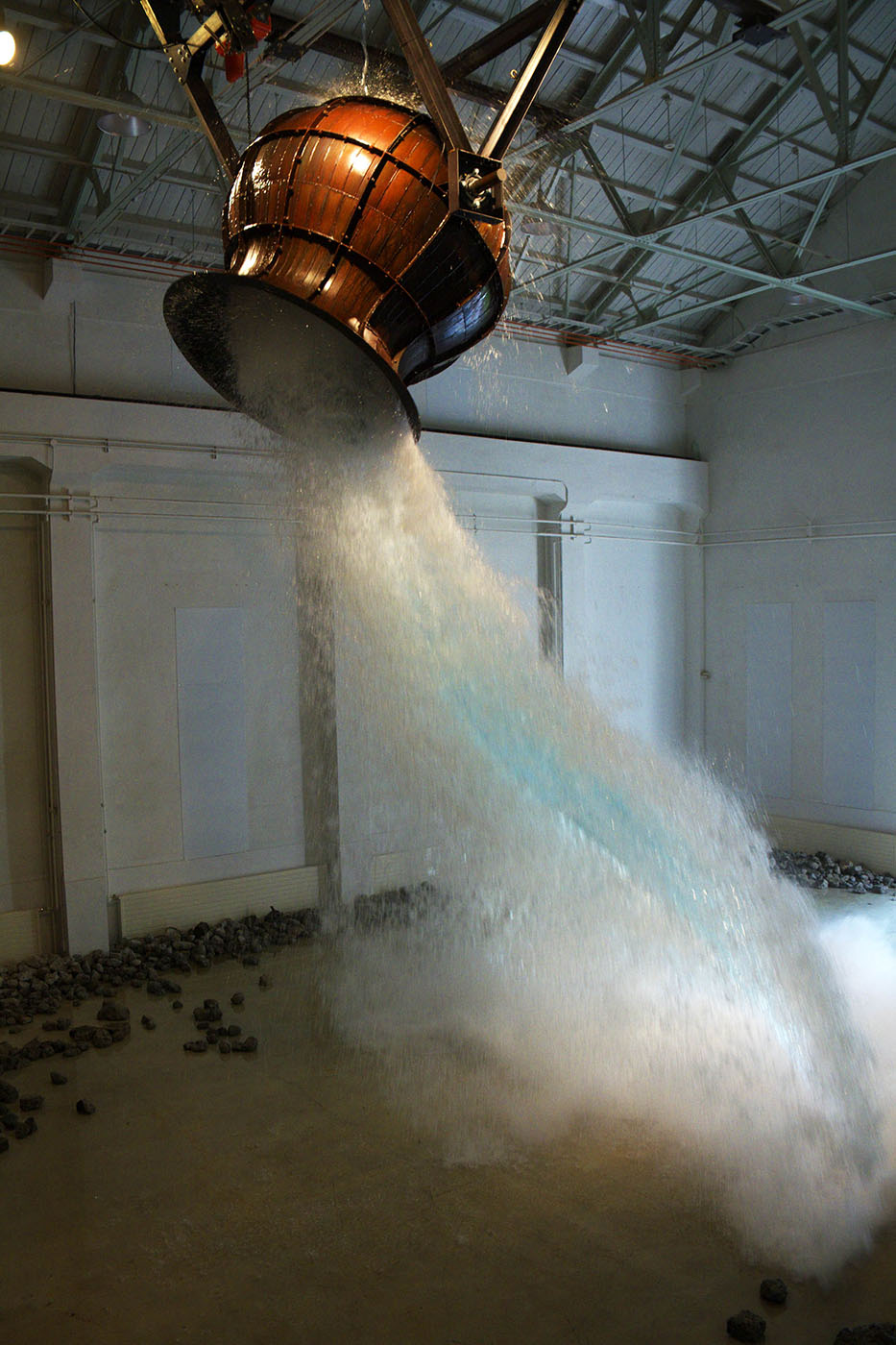MYTHOS [2010]
“Great Flood” as a Symptom
Yanobe’s solo exhibition MYTHOS was held at Nizayama Forest Art Museum in Nyuzenmachi of Toyama prefecture. The museum was rebuilt from a former hydroelectric power station operated by Hokuriku Electric Power Company. The building is located on an alluvial fan of Kurobe River, famous for repeated floods, which is unusual for the site of museum. As compared with Tate Modern, which is also known for being rebuilt from a power plant, Nizayama Forest Art Museum is not equipped with exhibition rooms and the huge interior space of power station has been kept intact. Usually, the things displayed in the exhibition rooms of museum are made to appear as works of art, which is the effect of the museum, but the space of Nizayama Forest Art Museum is too huge and overwhelming, which does not work well for the art works. Based on the origin of museum, and to create the works which would surpass the huge space, Kenji Yanobe conceived the project of large scale installations and work in progress.
The project was named MYTHOS, meaning legend and story in Greek, and consisted of four chapters. The project ran from June to September of 2010, separated with four periods as chapters; Introductory Chapter, Chapter 1 “Electric Discharge”, Chapter 2 “Great Flood” and Chapter 3 “Under the Rainbow”. Each chapter ran for about two weeks except for Chapter 3, which ran for about a month.
Introductory Chapter showed the world of chaos and imagination by rubble and the “Ruins of the Future”, Chapter 1 showed the world of beginning and creation by lightning and thunder emanated by electric discharge of Tesla coil, Chapter 2 showed the world of destruction by the great flood through draining water from huge water jar, Chapter 3 showed the world of revival by making a rainbow, casting light toward the huge trumpet-shaped object turned downward.
The project referred to not only the local history of flooding in Kurobe River and the power plant, but also other stories, such as Genesis of the Old Testament and personal history of Yanobe himself including that of former site of expo ’70 in Osaka and the ruin of Chernobyl. All these stories were woven in complicated manner in this project.
In recent projects, Yanobe puts his former works in the exhibitions and installations to show continuity and difference in the context of projects. The new works for each project serve to add dynamic variations. For the installation of Chapter 2 and 3, a huge water jar, which weighed 1t, was made in ULTRA FACTORY for this project. The water jar which contained 5t of water was suspended on the ceiling of 9m high, pivoted and drained water with the unfastening of stopper.
On the second floor of the museum, Torayan is standing on the rubble. Torayan has a Geiger Counter, which senses radiation and the display shows the amount of radiation in number. The number is counted down from 999 to 0, and at the moment when display turned 0, “Great Flood” by draining water begins and a trumpet rang throughout the space. The sound is associated with the “Apocalyptic Sound = the sound of ending”, which seven angels rang before “the Last Judgement” as written in Revelation of New Testament.
Through these chapters, Yanobe performed his version of “ the Last Judgement” The Geiger counter of Torayan reacted to natural radiation and the counting of radiation was unexpectable. “Great Flood” made the rhythm of nature visible in a dramatic manner. Strangely enough, the exhibition itself became a symptom for the tragic event that would happen in the next year. On 11th of March 2011, great earthquake and tsunami (Great flood) destroyed a nuclear power plant and artificial radiation leaked in huge amount.
In chapter 3, Torayan took off his Atom Suit, and The doll Chernobyl, a girl doll with a lily shaped lump in her hand stands on the rubble. Casted by light, oval rainbow appears inside the huge trumpet shaped object, and the rainbow suggested salvation and revival. As many of legends consist of the events in various places of the past and future, facts and fictions, MYTHOS was the exhibition worthy to be called as “ legend”.
